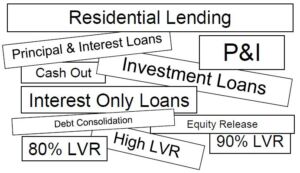The Regulators are flexing their muscles – Why?
You would have to be living on Mars not to know that most of Australia is experiencing, and has been for some time now, a property boom which has caused great concerns for Regulators like APRA.
So much so, that our Regulators have grave concerns for the future of property prices, and to where this boom might lead. Their concerns are that a bust is looming.
 The Regulators I am referring to are ASIC, APRA, ATO and the RBA.
The Regulators I am referring to are ASIC, APRA, ATO and the RBA.
The Regulators feel that Australians are leveraging too much debt while interest rates remain at historically low levels. Under normal circumstances the RBA would simply raise interest rates to slow both the market and economy down, and it would keep raising rates until it achieved the desired outcome.
Unfortunately, raising interest rates is not an option at present, as Australia’s economy is sluggish at best, and is, by and large, being driven by the property boom.
So, instead of raising interest rates the Regulators have been micro-managing the situation by pulling levers with our Banks/Lenders to achieve the desired effect. What I mean by levers is forcing change onto our Lenders to tighten lending policy and raise additional capital. The policy changes are mostly aimed at investor lending and interest-only loans. For further information please click here to go APRA’s newsletter dated 31st of March 2017.
The idea of tightening lending policy, is to make it harder for people to borrow money, and/or reducing peoples’ borrowing capacity to reduce their exposure to too much debt.
Micro managing, pulling leavers to restrict borrowing capacity
Forcing the Lenders to raise capital, what is this? How does this work and how does it impact on us? For every dollar, the Banks/Lenders in Australia lend you and me for residential lending, the Banks/Lenders must retain a certain amount of money on balance. To keep it simple, let’s say that for every dollar a Lender in Australia lends you and me for a residential property, the Lender must keep in store, on balance, 10 cents per dollar lent. This money cannot be used or invested by the Lender. This comes at a huge cost to the Lenders which is then passed onto you and me in the form of the interest rates we pay.
One of the levers the Regulators have imposed on our Lenders is that they are now required to hold more capital per dollar they lend you and me, and the amount the Lender is required to hold on balance varies, depending on the loan type and purpose. The Lenders are now required to hold on to more capital for residential investment loans and interest-only loans as opposed to principal and interest owner- occupied loans.
So far, the changes haven’t achieved the desired outcomes. Australia’s property markets haven’t slowed; property prices have continued to rise and auction clearances remain strong, with a good supply of properties for sale.
Why target property investor and interest-only loans? Investment properties are a discretionary item that can be easily disposed of to release financial pressure and free up cash flow to re-invest in the next “big thing”.
It is very easy for a property investor to walk away from an investment. The Regulators feel that when interest rates do finally increase, there will be a lot of property investors who have over leveraged themselves and, as a consequence, will want out of their investment properties. Hence this could see an over-supply of residential properties coming onto the market for sale.
The roll-on effect could cause a tsunami of property prices crashing from the sheer weight of properties being off loaded, supply and demand.
The above makes sense, so why are the Regulators targeting interest-only loans as well?
When your home loan or investment loan is interest-only, the Regulators see this type of loan as high risk. The principal does not reduce during the interest-only period. This means if property prices were to fall, there could be a significant number of people, both investors and owner occupiers that owe more on the property than what it is worth. This places the Lenders and the Australian economy at great risk.
Also, when the interest-only term expires, there will a sharp increase in your monthly loan repayment as your loan term will now be restricted to 25 years instead of the normal 30 years. The run-on effect of this for the Australian property market and economy could be disastrous.
All in all, our Regulators are doing their best to dampen our property markets, restrict our borrowing capacity and reduce our exposure to too much debt in order to take the heat out of an already over-heated property market, thus avoiding what is potentially the unavoidable Boom to Bust scenario.
For more information, or to find out if the changes will impact you, please call us on 0409 089 456.
Declan Hanratty – Managing Director
M: 0409 089 456 F: 03 9416 1916 ABN: 19 880 907 430 POSTAL: PO Box 1551 COLLINGWOOD Victoria 3066 MFAA Membership No. 50217 Australian Credit Licence No. 383120 Credit Ombudsman Service No. 412201

